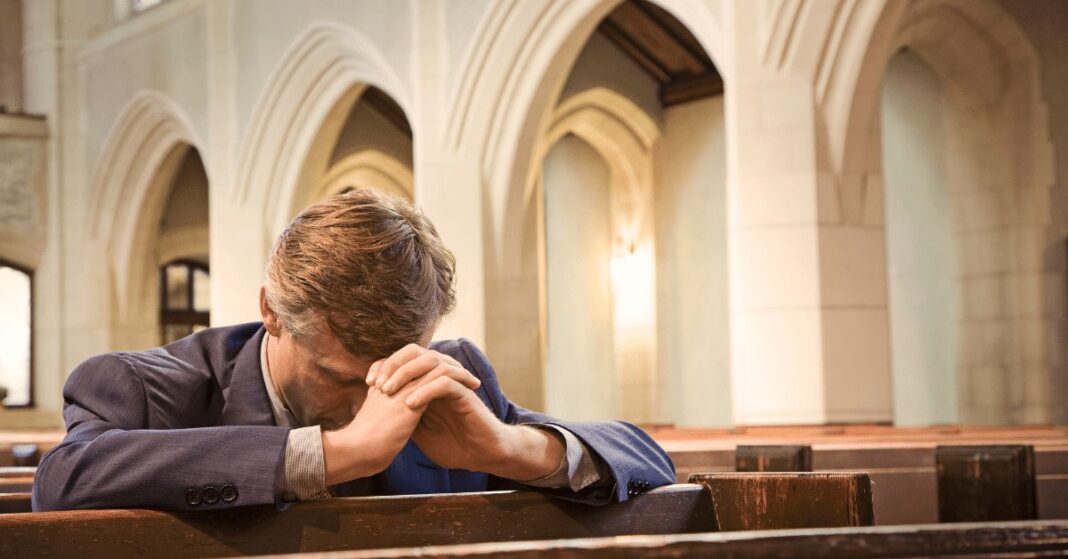Introduction
What is the distance between a man’s elbows and umbilicus when he’s kneeling? When he sits down, his height is at the middle point of his body, below the shoulder and breast. That part of a man’s height is actually half the size of his testicles. How did Leonardo determine this? Read on to discover more about the size of a man when he’s kneeling.
Pieter Lastman's rendering of a kneeling man
The eloquent, dramatic rendering of a kneeling man by Dutch artist Pieter Lastman is one of the most popular works from the seventeenth century. A study of his work reveals that he incorporated contemporary cultural and intellectual traditions into his works. Lastman emphasized the importance of portraying a subject’s internal conflicts, which are essential to history painting. This painting shows the artist’s place in The Leiden Collection.
Leonardo's study of human proportion
One of Leonardo’s most famous sketches was made as part of his study of human proportion, based on a text by the ancient Roman architect Vitruvius. It typifies Leonardo’s combination of art and science in his conception of the world. In this famous sketch, Leonardo sought to marry perfect male proportions with nature. His theories centered around the idea that the workings of the body are tied to the structure of the universe. However, the sketch demonstrates that there is no universally correct human body proportion.
The concept of proportion was central to Leonardo’s study of human proportion. He sought to duplicate the proportions in Vitruvius’s model but drew differences between the two. Ultimately, this helped him improve his mathematical calculations. The drawing of a woman’s figure does not fit neatly into the Vitruvian man’s model, so Leonardo sought to correct his mistakes. The result is a beautiful composition that does not fit neatly into the model of the human body.The original intent of Leonardo’s anatomical illustrations was to accompany his De Figura Humana, a work begun in 1489 that never reached completion. The Vitruvian Man, originally called Le proporzioni del corpo umano secondo Vitruvio, was a study of human proportion based on the measurements of the human body. As Vitruvius noted, the ancients modeled their temples on human body proportions. For instance, the human body can be enclosed in a perfect square and a perfect circle.
This great study of human proportion reflects Leonardo’s knowledge of anatomy. He believed that the human body was a microcosm of the universe. He believed that the human body was an analogy to the universe, as the body is made up of earth, water, air, and fire. Leonardo compared the human skeleton to rocks and the breathing of an animal to the ebb and flow of the oceans.
The dimensions of the human body are the most important feature in his drawings. The human body’s natural center is the navel, which means that a circle drawn from the navel to the base of the skull will touch the fingers and toes. This is a measure of the body’s proportion to the temples. So, if a circle is drawn from the navel, then the legs and the head will fall in line.
Although the studies of human anatomy began with the observation of nature, Leonardo did not abandon tradition and instead sought to improve scientific representations of the body. His autopsies revealed that the human body was not symmetrical and that the heart, as a result, was not in the same plane as the other organs. The human heart is also missing an intestine, and the female skeleton does not have any stomach.
Pieter Lastman's study of human proportion
The characteristics of Pieter Lastman’s study of human composition resemble the techniques of live model drawing, and the sheet depicts the artist’s rapid handling of chalk. He demonstrates contraction of muscles as he grasps the chest and models the figure with his arms and legs. The sheet is included in Rembrandt’s inventory from 1656, and is one of the earliest studies of human proportion in Amsterdam.
The composition of Lastman’s Madonna of the Rosary and Saints Paul and Barnabas in Lystra (1617) shows the influence of Caravaggio, but the painting is a turning point in Lastman’s career. His narrative scenes had previously been oriented horizontally, and his compositions now showed a vertical orientation. The compositions became more realistic, but still reflected the influence of the master’s work.

Man Kneeling Reference Images - 32 Different Angles and Three Thousand-Piece Figures
This set of 32 man kneeling reference poses includes 32 different angles and three thousand-pixel figure reference images. These images are royalty-free and suitable for commercial and personal use. In this article, we will discuss the 32 different angles and the meaning of the pose. This is Leonardo da Vinci’s first and most comprehensive study of human proportion. This article will cover human proportions and the 32 unique angles of the man kneeling pose. Let us now move on to the other side of the coin: what is the meaning of the kneeling pose?
Leonardo da Vinci's first and most sustained study of human proportion
In his most famous work, “Vitruvian Man,” Leonardo da Vinci applied mathematics to the creation of a perfect human form. His fascination with proportion led him to draw perfect human forms, including the famous “St. Jerome in the Wilderness,” which shows St. Jerome kneeling beneath a crucifix. The landscape is rocky, and a tamed lion lies at his feet.
His Vitruvian Man is the first study of human proportion ever to link art and science, as he depicted human body features in two poses. This study was a major step towards the development of a more detailed understanding of human anatomy. Leonardo da Vinci filled dozens of notebooks during his career. While studying human proportions, he was inspired by the ancient Roman architect Vitruvius.
In the 1490s, Leonardo studied the topographical anatomy of the human body and prepared a series of drawings on the subject. He also studied the skeleton of animals, such as cows, monkeys, and frogs, and compared their anatomical structures to the human body. He then studied the skeleton of the human foot and leg, preparing five studies on human anatomy.
After his first and most comprehensive study of human proportion, Leonardo painted the torso of Christ in The Baptism of Christ, in which he collaborated with master Verrocchio. His research continued until his death, and he made many pages of notes on the subject. Although his journals were never published, he intended to publish them. His successor, Melzi, published these notes in his books.
In his later years, Leonardo da Vinci began studying mathematical and architectural proportion. His mathematical studies were often self-taught, but he later studied with Franciscan friar Lucca Pacioli. The study of proportion may have been more widespread in paintings of religious significance, and it is possible that he learned this subject from his mentor. In addition to studying anatomy, he studied engineering and math with the help of Pacioli.
In addition to studying proportion, Leonardo also studied the golden ratio. His “Adoration of the Magi” is a painting intended to showcase both his expertise in figure drawing and perspective. It also features a complicated background of ruined Classical buildings. This painting is also recognized as the first to use anamorphosis, a technique which makes distant objects appear larger than close objects.
Human proportions
When comparing the heights of a male and a female, you might be surprised to learn that the females’ bodies are longer than the males’. The classical male body proportion is roughly eight and a half times the height of the female. In historical periods, human proportions have been measured by other means other than head size. Some of these canons centered on length of arms and fingers, while others were based on the size of a person’s hands.
Moreover, humans’ body proportions are determined by the growth of different post-cranial body segments, including legs. It is known that children with short legs have a poorer environment than their counterparts with longer legs. Several factors affect the growth of the legs, including genetics. Recent studies have implicated the expression of a genomic region called HOXd in the development of human body proportions. This gene is closely linked to short stature, a condition known as Turner syndrome.
Nevertheless, the proportions of people are not always as accurate as in other positions. This is because humans have species-specific body proportions, which allow them to perform various tasks. For example, their bipedal stride enables them to walk for long distances and maintain a constant temperature. Their body proportions also allow them to communicate with each other, gesticulate, and form language. They are also the basis of human language, gesticulation, and social-emotional contact.
Human proportions are influenced by various factors, including age, posture, and body type. Properly defining human body proportions is crucial for producing realistic and lifelike drawings. Luckily, this process is fairly easy once you’ve mastered the fundamentals of drawing the human body. All it takes is practice and close observation. There is no reason not to learn this skill! Just follow the steps outlined below and you’ll be well on your way to creating a stunning portrait of a human!
Meaning of kneeling
A man kneeling to propose to a woman may seem like a very modern gesture, but it actually has its origins way back in the Middle Ages. Men of good birth were traditionally known to devote themselves to a noblewoman, submitting to her wishes through deeds of honor and poetry. This act of supplication showed her the level of commitment and respect he had for her, and it also symbolized the ultimate surrender.
As a sign of deference, kneeling in a religious context conveys deference. The action makes a person appear smaller and weaker than the one he is addressing. In many societies, pecking orders are vital to the survival of a group, and males who challenge the hierarchy are severely injured or killed. In some cases, submissive behavior can save a man’s life. Here’s the meaning of man kneeling in a religious context
The gesture is used to express respect and deference in a variety of contexts, including marriage and funeral ceremonies. In some cultures, kneeling is associated with submissiveness, submission, mourning, and vulnerability. However, in modern times, the symbol has acquired double meaning in the context of social and religious protests. In the Middle Ages, kneeling was associated with submissiveness or submission to a lord.
Some Conservative politicians object to the action, as it represents a political statement and an effort to support the Black Lives Matter movement and the black people who support the movement. But it is gaining traction in a wider range of contexts. Recently, British racing driver Lewis Hamilton was rumored to take a knee at the US Grand Prix before last October’s race in Indianapolis. Hamilton declined to take the knee, but openly endorsed the protest. The ongoing political turmoil will likely keep the expression in the public eye for some time to come.
The Person Kneeling emoji is a common emoji. It represents a person kneeling, often praying. This emoji is also used in other contexts. In some cases, it depicts a woman kneeling as well. This is also a way to show respect and worship to someone else, or simply to demonstrate gratitude for someone. You may even find it funny if you’ve seen a man kneeling, but don’t let it stop you from using it!






